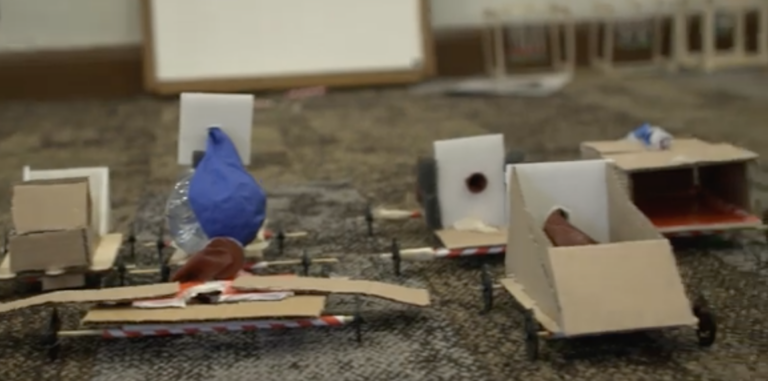
Evaluate and Iterate
Learn how and why engineers test their designs to see how well they work. They collect and analyze data to revise and improve solutions in an iterative process.
Resources
Education Item
Where Are You Stuck?
Notice how the facilitator nudges learners to find their own solutions as they create the algorithms that control their agents in the virtual world.
Education Item
Design and Test
Participants will use “What-If” cards in order to help youth engage in engineering design practices like using criteria and constraints, facing a failed test, and redesign.
Education Item
Engage in Iteration
See how youth test their packaging designs to see if they can protect an egg, and how Denise and Jaimie organize the activity to challenge them to improve designs.
Education Item
Iteration with Balloon-Powered Vehicle
Engineers test their designs to see how well they work. Then they use their observations and data to test their design, then test it again. The educator in this video explains how to test balloon-powered cars and encourages youth to improve their designs.
Education Item
Developing an Active STEM Learning Environment
Participants will compare Glurch and Oobleck to learn how to engage youth in active learning.
Education Item
Keep Youth Interacting
STEM activities are engaging, interactive and hands on experiences for youth. But what happens when members of a group are not interacting? In this video, pay close attention to how the facilitators work with a group if members become disengaged. Listen to the supportive but firm voice of the adult, as she re-directs the group. Pay special attention to how staff listen, maintain a supportive attitude, and model effective collaboration skills.
Want to learn more about another practice for developing an engineering mindset?
Check out the resources available for Envision Multiple Solutions.
Learn more
